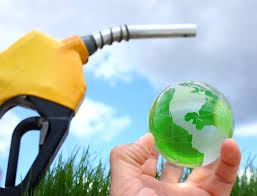4 red lines in India-US trade talks: Corn, ethanol, soyabean & dairy
By Harish Damodaran
United States President Donald Trump has said his administration is going to sign “a very big” trade deal “to open up India”, “where we are able to go in and compete (with) much less tariffs”.
India has maintained that agriculture and dairy are its “red lines” in its ongoing negotiations with the US. “There’s no way we could do anything that would weaken our agriculture, our farmers’ positions,” Finance Minister Nirmala Sitharaman said in an interview with the Financial Express.
What are these “red lines” that the US is testing and driving a hard bargain to circumvent, if not remove?
It basically reduces to four farm products: corn (maize), ethanol, soyabean and dairy.
On these, India imposes both tariff and non-tariff restrictions, and the US is pushing for greater market access.
The first is corn
The US is the world’s biggest maize producer and exporter, with an estimated 377.6 million tonnes (mt) output, as against India’s 42.3 mt, in 2024-25.
As much as 94% of the total area planted to corn in the US last year was under genetically modified (GM) varieties. These incorporate alien genes from bacteria that code for proteins enabling the crop to “tolerate” application of herbicides such as glyphosate and glufosinate or resist attacks by specific insect pests.
India charges 15% duty on maize imports of up to 0.5 mt annually, with quantities beyond that attracting a higher 50% rate. Moreover, it neither grows nor allows import of GM maize.
One proposal mooted is to permit import of GM maize exclusively for use as a feedstock to manufacture fuel ethanol. Over 46% of the ethanol being made available by Indian distilleries for blending with petrol is, in fact, currently coming from maize.
That’s more than the share of other feedstocks: Sugarcane juice/molasses (32%) and surplus/broken rice (22%).
Maize is largely a feed grain supplying carbohydrates, the principal source of energy for poultry and livestock. Restricting the use of imported GM maize only to milling and the fermentation of its starchy carbohydrates into fuel ethanol is meant to prevent this material from entering the food chain. The milk, egg or chicken consumed in India will, then, not come from cattle and birds fed on GM maize, whether imported from the US or Brazil.
But the proposal faces resistance from sugar mills. The share of ethanol supplied from grain-based feedstock has risen from zero to 57% between 2017-18 and 2023-24. The mills fear that imported GM maize will lead to the further marginalisation of sugarcane in the ethanol-blended petrol (EBP) programme.
Opening the doors for GM maize imports may also encounter political roadblocks, ahead of the Bihar Assembly elections: The state is India’s third largest maize producer after Karnataka and Madhya Pradesh.

The second is ethanol
The US is the world’s biggest producer and exporter of ethanol too. In 2024, it exported $4.3 billion worth of ethanol, with India being the third largest market (at $441.3 million) after Canada ($1.5 billion) and United Kingdom ($535.1 million).
India now allows ethanol imports only against “actual user” licence for non-fuel industrial purposes. Imports can be for manufacturing alcohol-based chemicals, medicines or beverages, but not for blending in petrol and diesel.
Given India’s total projected ethanol consumption of 11,350 million litres in 2025, with fuel’s share at 9,650 million and industrial use at just 1,700 million litres, the US would want an opening up of the market.
But import of ethanol for fuel use is likely to be a “red line” for India. It may be seen as undermining the EBP programme’s primary objective — to reduce dependence on imported fuels and create a market for surplus domestic agricultural produce, particularly sugarcane and cereal grains.
The third is soyabean
US is the second biggest producer and exporter of soyabean after Brazil. With 96% of acreage in the US and 99% in Brazil under herbicide-tolerant GM varieties, the average per-hectare yields of 3.4-3.5 tonnes in these two countries are way above India’s 0.9 tonnes.
India allows import of GM soyabean oil. However, imports of both whole GM soyabean and the residual de-oiled cake (DOC) after extraction of oil are prohibited. The reason: The GM protein matter is present only in the raw bean and DOC, not the oil.
A recent NITI Aayog working paper (subsequently withdrawn) had called for exploring the option of importing GM soyabean, so that the oil extracted can be sold in the domestic market and the DOC exported to other countries. This would ensure that only the oil gets consumed locally and the imported soyabean is neither planted by Indian farmers nor used as an animal feed ingredient.
But soyabean is grown in some 13 million hectares of the country — mainly the BJP-ruled Madhya Pradesh, Maharashtra and Rajasthan. That, plus the crop selling at well below the government’s minimum support price, may not make it politically easy to permit imports of GM soyabean.
The last is dairy
The US isn’t as big a player as New Zealand and the European Union in dairy, when it comes to the global milk powder and butter trade.
The duties that India currently levies — 30% on cheese, 40% on butter and 60% on milk powder — render imports from even low-cost producers such as New Zealand and Australia unviable. On top of that is the requirement — which, the US claims, is purely “premised on religious and cultural grounds” — for all imported dairy products to be derived from animals not fed on any formulation produced from the internal organs, blood meal or tissues of bovines.
While dairy is clearly a “red line” on which India is unlikely to yield much ground, it may also turn out to be a leveraging point that the US would use to extract concessions in the other agricultural commodities.
This article has been republished from The Indian Express.

